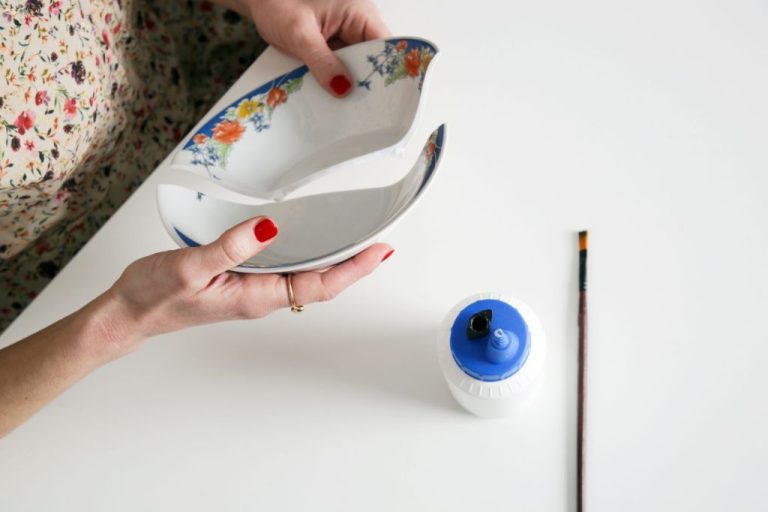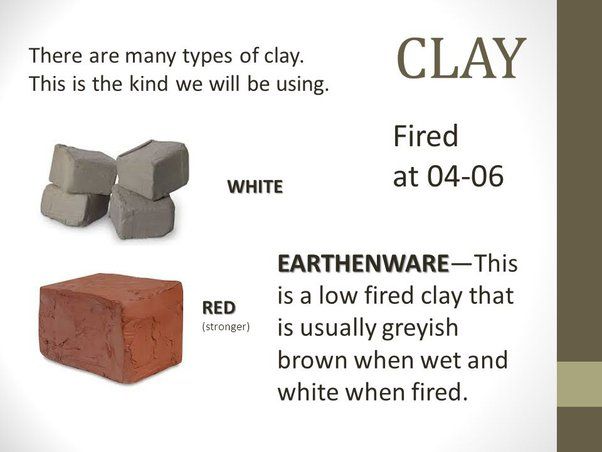How Long Does It Take To Fire Ceramics In A Kiln?
Ceramics refer to items made from clay that has been shaped and then hardened through high temperature firing in a kiln. Clay is formed into various shapes such as pots, tiles, figurines, and more, and then undergoes a firing process to permanently harden the clay. Kilns are ovens designed to achieve the extreme temperatures needed to fire and harden clay. The firing process in a kiln involves slowly heating up the clay objects to very high temperatures, which causes chemical changes that permanently harden the clay.
The overall firing process typically consists of three main stages – drying the shaped clay, bisque firing at a moderate temperature to begin to harden the clay, and then a final high-temperature firing called glaze firing. The firing schedule, including ramp up times, hold times and peak temperatures, can vary significantly depending on factors like the type of clay, the size and type of kiln, and the desired final properties of the ceramic piece. Firing cycles can take 6 hours to over 24 hours to complete.
Clay Type
Different clay types require different firing times and temperatures. Clays can be classified into three main types: earthenware, stoneware, and porcelain. Earthenware clays are fired at lower temperatures, usually between 1000-1150°C. They mature more quickly in the kiln and can be fired in a single bisque firing. Stoneware clays require higher firing temperatures, typically between 1200-1300°C. Multiple firings are needed to fully vitrify stoneware. Porcelain clays must be fired at the highest temperatures, around 1300-1400°C. The high kaolin content in porcelain means it needs more time and heat to sinter and become non-porous [1]. In general, higher clay firing ranges require more time in the kiln to fully mature.
Kiln Type
There are several main types of kilns used for firing ceramics, each with their own advantages and disadvantages. The main types include electric kilns, gas kilns, wood-fired kilns, and raku kilns.
Electric kilns are very popular for firing ceramics because they offer excellent temperature control and consistency. Electric kilns can precisely adjust the temperature ramp up and down during the firing schedule. This level of control allows for consistent, repeatable firing results. The downside is that electric kilns may require more time to reach top temperatures compared to gas or wood-fired kilns. According to https://kilnfrog.com/pages/kiln-types, electric kilns can take 8-12 hours to complete a typical firing.
Gas kilns utilize natural gas or propane for fuel. The open flame can enable gas kilns to reach higher temperatures faster than electric kilns. However, the temperature in gas kilns can fluctuate more and be less uniform throughout the space. Proper ventilation is also critical when firing a gas kiln. Gas kilns are capable of firing a load in 6-10 hours typically.
Wood-fired kilns use wood as the fuel source. The wood fire produces atmospheric effects on the ceramics that make wood-fired pottery unique. However, firing in a wood kiln requires constant stoking of the fire and close monitoring of temperatures. Firing times for wood kilns are longer, often 12-48 hours depending on the size of the kiln and firing goal. According to https://www.potterycreative.com/types-of-kiln-for-firing-ceramics/, wood kilns may be the slowest type for completing an entire firing cycle.
Raku kilns are small, portable kilns used for raku firing techniques. They can fire very quickly, often in under an hour, because only select pieces are fired at a time to low temperatures (~1800°F). The quick firing and cooling creates distinctive crackling effects in raku ware. However, raku kilns alone are not sufficient for a complete firing of ceramics.
Firing Stages
There are two main stages in firing ceramics – bisque firing and glaze firing. Bisque firing is the first firing stage and is done before any glazing. According to The Pottery Wheel, bisque firing serves to convert the greenware or unfired clay into a porous, biscuit-like material known as bisque. This process hardens the clay body and makes it less fragile and easier to handle for glazing. Bisque firing is done at lower temperatures, typically between cone 04 (1945°F) and cone 06 (2232°F).
The second firing stage is glaze firing or glost firing. This is done after the bisque ware has been glazed. According to Soul Ceramics, glaze firing melts the glaze onto the clay body, resulting in a glass-like coating. Glaze firing is done at higher temperatures – cone 6 (2228°F) is a common glaze firing temperature. The glaze needs to mature at the right temperature to properly flux and create an impermeable surface.

Bisque firing takes less time compared to glaze firing. A typical bisque firing may take 4-6 hours to complete, whereas a glaze firing can take 6-12 hours depending on the temperature and kiln size. Bisque firing needs slower, controlled heating rates while glaze firing requires precise control of temperatures to mature the glaze correctly.
Firing Schedule
Following a structured firing schedule when firing ceramics in a kiln is crucial for obtaining successful and consistent results. The firing schedule outlines the ramping rates for increasing the kiln temperature, target temperatures, and hold times for each stage of the firing process. Having a schedule to follow ensures proper vitrification of clay bodies and glazes (Tips and Tools: Firing Schedules).
The firing schedule accounts for the chemical and physical changes clays and glazes undergo at specific temperatures. A schedule tailored for a specific clay body and glaze combination will have optimized ramps, holds, and target temperatures. Rushing the firing can risk underfired pieces that are weak, while prolonged firing can cause glaze defects. Following the prescribed ramps allows heat to penetrate evenly, and holding at critical points like glaze set and vitrification ensures proper material maturation.
Well-designed firing schedules have been extensively tested for consistent results. Attempting to alter or shortcut the schedule is likely to cause firing failures. The schedule’s ramps, holds, and targets should be followed precisely for success (Kiln Firing Schedules for Glass, Ceramics and Heat Treat). Having a reliable reference like a printed schedule, kiln log, or electronic program eliminates guesswork and uncertainty during firing. Overall, adhering to a structured, proven firing schedule is the best practice for achieving quality finished results when firing ceramics.
Temperature Ramping
The ramp rate refers to the speed at which the kiln temperature increases during firing. There are two main approaches to ramping – gradual ramping at 60-120°F per hour and fast ramping at 200-300°F per hour or more (Source: https://www.kilncontrol.com/blog/kiln-firing-schedules/).
Gradual ramping is gentler on the clay and glazes, allowing heat to fully penetrate the pieces. It minimizes the risk of flaws like cracking or glaze defects. Fast ramping can cause issues if the clay cannot expand at the same rate as the rapid temperature increase. However, fast ramping is more time efficient. The optimal ramp rate depends on the clay type, thickness, glazes used, and kiln size. Gradual ramps are recommended for thicker, large pieces to allow thorough heating. Fast ramps work for smaller, thinner pieces. Knowing theclay’s thermal properties helps determine suitable ramp rates (Source: https://www.thesprucecrafts.com/firing-schedules-and-ramps-2746244).
Hold Times
Holding temperature during firing is an important step that allows ceramics to fully mature. Adding a hold time at the kiln’s peak temperature gives the clay and glazes time to fully vitrify and prevents under-fired results. Proper hold times ensure an even firing, prevent flaws like pinholing, and lead to more durable finished pieces. According to hotkilns.com, kilns held for 20 minutes at peak temperature typically get half as many firings as kilns without a hold time. While not always necessary, hold times between 10-30 minutes are commonly recommended depending on the clay body, glaze, and kiln size.
Kiln Size
The size of the kiln and the amount of pieces being fired have a significant impact on the total firing time. Larger kilns with bigger loads will take longer to heat up and cool down compared to smaller kilns firing fewer pieces.[1]
For example, an empty small hobby kiln may only take 6-8 hours to complete a fast firing schedule to cone 6. However, that same firing in a large production kiln packed full of ware could take 24 hours or longer.
This is because the greater thermal mass of a large, packed kiln absorbs more heat energy and requires more time for the heat to penetrate and properly fire the pieces. More energy is needed to raise the temperature, as well as more time for the heat to evenly dissipate during cooling.[2]
As a general guideline, firing time increases by approximately 15-30 minutes per cone number for each additional cubic foot of kiln size. However, the load size, thickness and type of clay pieces also impact the time significantly.
To achieve an efficient firing, it’s important to optimize the kiln load for the size of the kiln, while providing enough room for heat circulation. Pack ware tightly but allow at least 1 inch between pieces.[3] Consult manufacturer guidelines for recommendations specific to your kiln.
[1] https://www.brackers.com/firing-schedule-for-manual-kilns/
[2] https://skutt.com/skutt-resources/resources-just-for-you/teacher/the-basics/
[3] https://skutt.com/best-practices-for-loading-and-firing-your-skutt-kiln/
Tips for Efficiency
When firing ceramics in a kiln, you want the process to be as efficient as possible without compromising the quality of the finished pieces. Here are some tips to optimize firing time:
Carefully stack pieces in the kiln, leaving enough space between them for air circulation. Pieces that are too crowded take longer to fire. According to Soul Ceramics, at least 1 inch between pieces is ideal.
Use furniture or stilts to elevate pieces off the kiln floor. This allows heat to circulate underneath them. Just be sure not to overload shelves.
Fire with the maximum number of pieces your kiln can hold. Underloading wastes time and energy.
Choose faster firing speeds when possible, up to the maximum recommended for your clay and glazes. According to Ceramic Arts Network, fast speeds between 400-600 degrees F per hour are common.
Use a kiln sitter rather than a digital programmer for one-step firings. The mechanical kiln sitter turns off the kiln as soon as final cone temperature is reached.
Perform regular kiln maintenance like sealing cracks, lubricating moving parts, and replacing worn elements. This optimizes heating efficiency.
With some planning and experimentation, you can discover the most time-efficient practices for firing your specific clay, glazes, and kiln model while still achieving flawless results.
Conclusion
The total time it takes to fire ceramics in a kiln depends on several key factors:
- The type of clay being fired – earthenware clays require lower temperatures and shorter firing times than stoneware or porcelain.
- The type of kiln being used – electric kilns allow for precise control over ramp rates and hold times, firing faster than gas or wood-fired kilns.
- The number of firing stages – biscuit firings are typically faster than glaze firings.
- The firing schedule – slower ramp rates and longer hold times at target temperatures will extend firing times.
- Kiln size – larger kilns require more time for the heat to fully penetrate the pieces inside.
Following an optimized schedule for the specific clay and kiln can help fire ceramics efficiently. Allowing sufficient ramp up, hold, and cool down times ensures an even firing and quality results.



